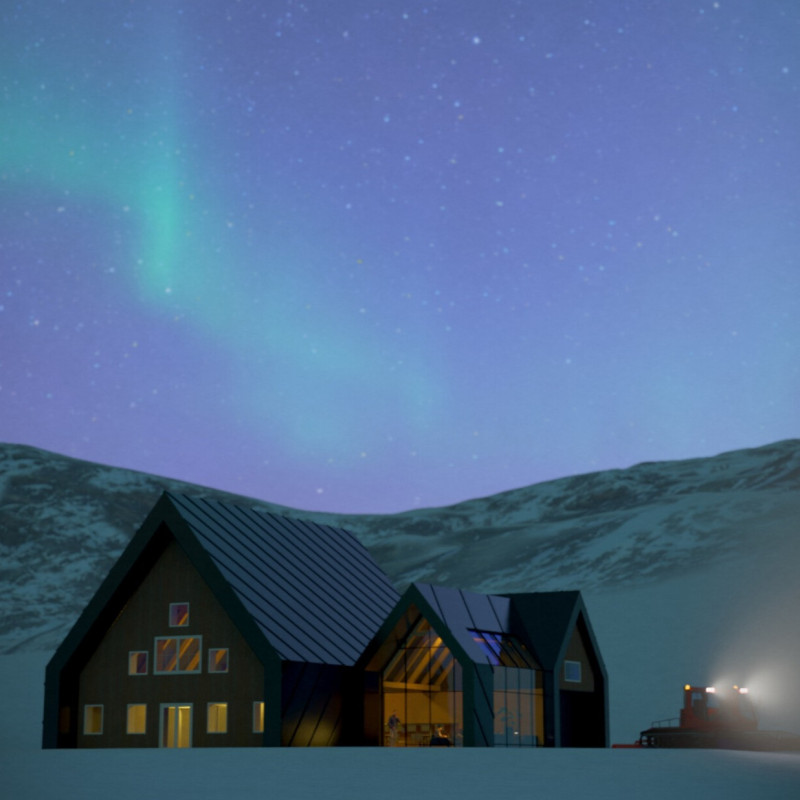5 key facts about this project
At its core, the project embodies a commitment to sustainability and environmental responsibility. The design integrates a variety of sustainable practices, demonstrating a conscious effort to minimize ecological impact while enhancing user experience. The exterior facade is a striking combination of materials, including concrete, steel, glass, and wood, each selected not only for its functional benefits but also for its visual contribution to the overall composition. The use of glass allows for ample natural light, blurring the boundaries between the inner and outer environments and offering stunning views of the surrounding landscape.
Key to this architectural design is its spatial arrangement, which encourages a dynamic flow of movement through the building. The layout is carefully considered, with open spaces that invite exploration and gathering. Courtyards and terraces thoughtfully punctuate the building, offering areas for respite and connection. These outdoor spaces are seamlessly integrated with indoor environments, promoting a sense of continuity and cohesiveness. By incorporating both communal and private areas, the design caters to various user needs while fostering interaction among individuals, enhancing social engagement.
One of the unique design approaches within this project is its response to the historical context of the location. The architect has skillfully woven elements of local architectural traditions into the contemporary framework, creating a dialogue between the past and present. This engagement with local culture is evident in the choice of materials and the form of the building, which nods to the vernacular styles while remaining distinctly modern. Such a careful consideration of context helps to root the architecture within its landscape, creating a sense of belonging.
The project also features innovative technology applications that enhance functionality and user experience. Incorporating smart building systems, it addresses energy efficiency and resource management, signaling a forward-thinking approach to modern architectural practice. Spaces are designed with adaptability in mind, allowing for changes in use over time without significant alterations to the structure itself.
The interplay of light and shadow throughout the design serves not only aesthetic purposes but also functional ones, aiding in passive heating and cooling techniques. These environmentally conscious strategies highlight the project’s commitment to sustainability, ensuring that its ecological footprint is minimized while maximizing user comfort.
In summary, this architectural project stands as a testament to modern design principles that prioritize sustainability, community engagement, and architectural heritage. Each element has been thoughtfully curated to ensure that it operates harmoniously within its context while catering to the diverse needs of its users. For those interested in exploring the full scope of this exceptional project, including its architectural plans and sections, a deeper dive into the architectural designs and ideas will provide valuable insights into the thought process behind its execution. We encourage readers to engage with the project presentation to appreciate its intricacies fully.


 Joachim Tadeusz Borzyszkowski,
Joachim Tadeusz Borzyszkowski, 























